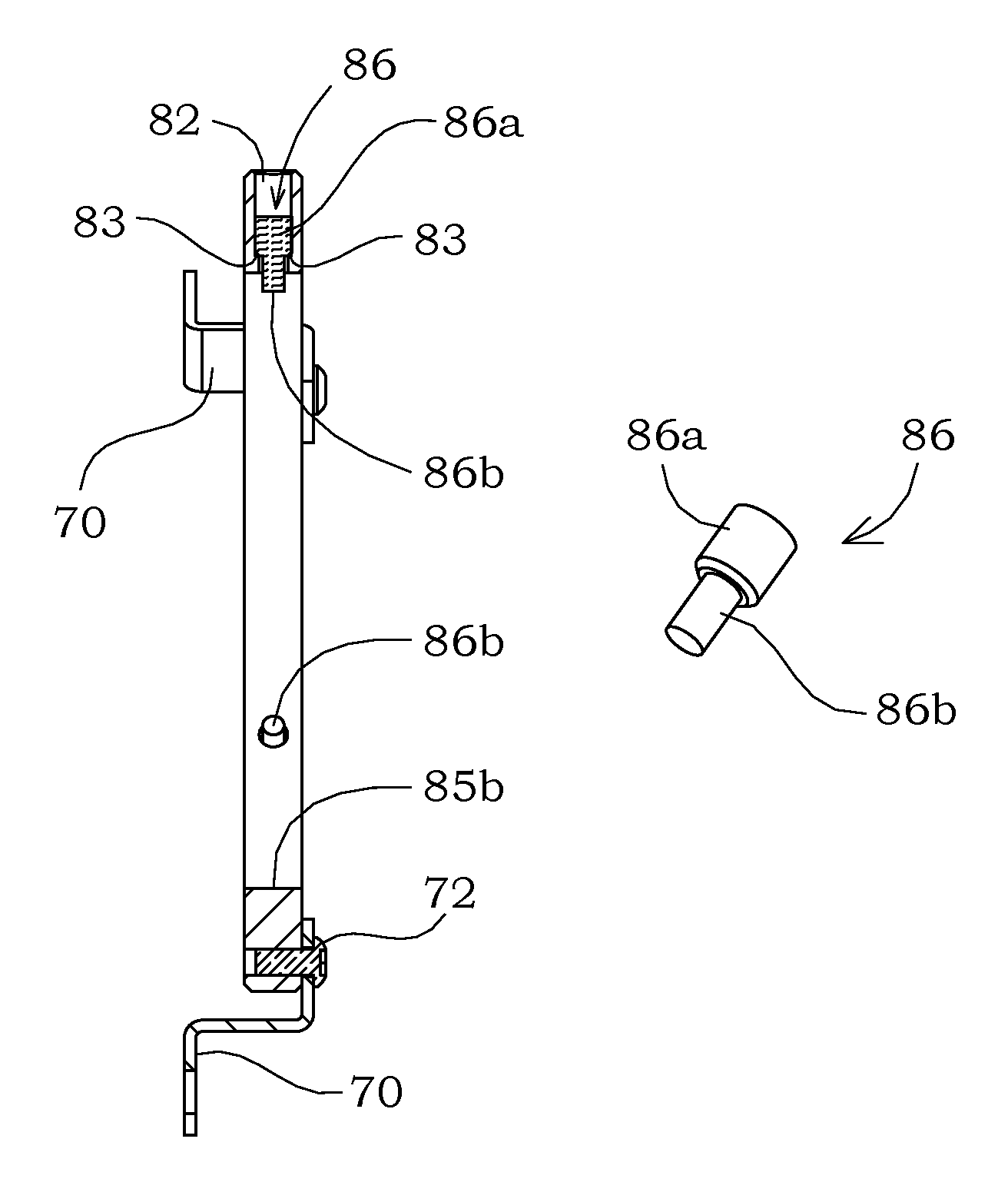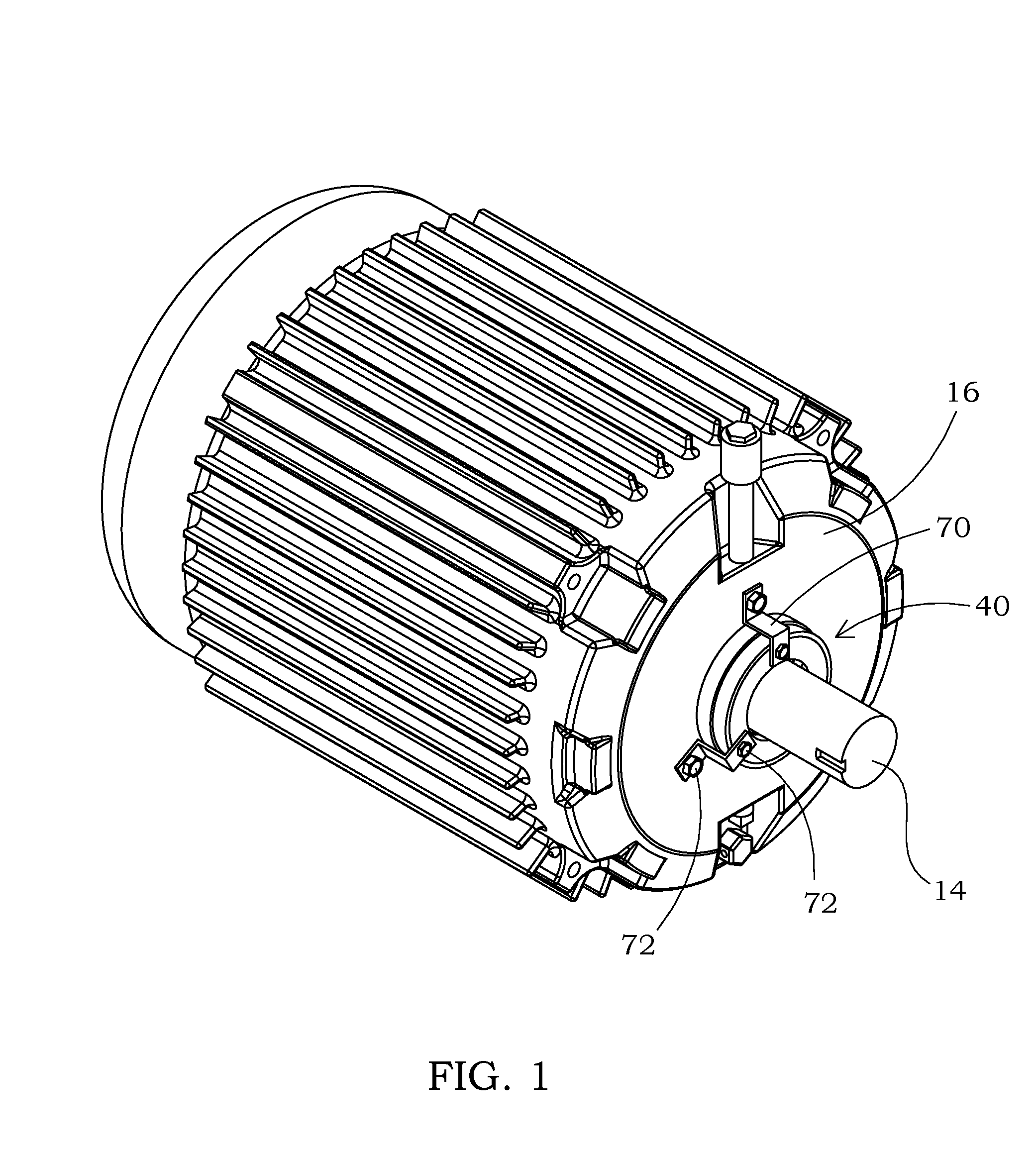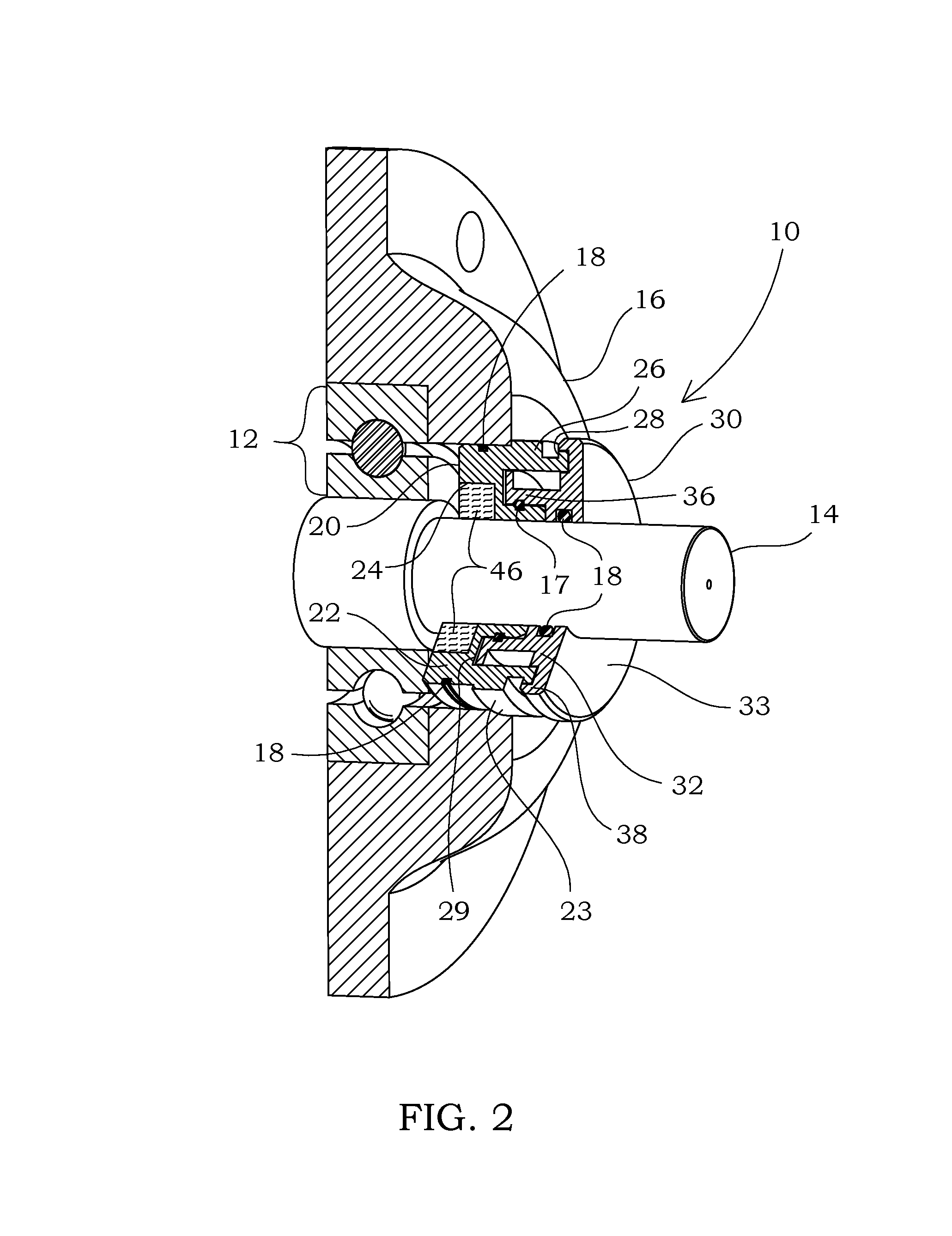Current diverter ring
a current diverter and ring technology, applied in current collectors, supports/enclosements/casings, dynamo-electric machines, etc., can solve the problems of affecting the operation of electrical motors using variable frequency drives. the effect of lubricant leakag
- Summary
- Abstract
- Description
- Claims
- Application Information
AI Technical Summary
Benefits of technology
Problems solved by technology
Method used
Image
Examples
first embodiment
of a Single-Piece CDR and Bearing Isolator
[0057]In another embodiment, the CDR 40 and / or bearing isolator 10 may be mounted such that either the CDR 40 and / or bearing isolator 10 are allowed to float in one or more directions. For example, in one embodiment a portion of the bearing isolator 10 is positioned in an enclosure. The enclosure is fashioned as two opposing plates with main apertures therein, through which main apertures the shaft passes 14. The interior of the enclosure is fashioned such that the bearing isolator 10 and / or CDR 40 is positioned within a truncated circle (i.e., pill-shaped) recess on the interior of the enclosure. The contact points between the bearing isolator 10 and / or CDR 40 and the enclosure may be formed with a low friction substance, such as Teflon®, affixed thereto.
[0058]A more detailed cross-sectional view of one embodiment of a bearing isolator 10 with which the CDR 40 may be used is shown in FIG. 3. The bearing isolator 10 shown in FIGS. 2 and 3 in...
second embodiment
of a Single-Piece CDR
[0091]A radial CDR 80 is another embodiment of a CDR 40, which is shown in FIGS. 15A, 15B as a ring-shaped structure having a main aperture 88 in the center thereof. As with other embodiments of the CDR 40 disclosed herein, the CDR 40 may be mounted to rotational equipment through any structure and / or method without limitation. The embodiment of the radial CDR 80 shown in FIGS. 15A and 15B includes three straps 70 affixed to the radial CDR 80 via fasteners 72. Other fasteners 72 may be used to secure the straps 70 to the rotational equipment, thereby securing the radial CDR 80 to the rotational equipment. In other embodiments of the radial CDR 80, the radial exterior surface 85a of the radial CDR 80 is press-fit into the rotational equipment housing 16. However, the mounting method for the radial CDR is in no way limiting to its scope.
[0092]The embodiment of the radial CDR 80 shown herein includes three radial channels 82 extending from the radial exterior surfa...
PUM
 Login to View More
Login to View More Abstract
Description
Claims
Application Information
 Login to View More
Login to View More - R&D
- Intellectual Property
- Life Sciences
- Materials
- Tech Scout
- Unparalleled Data Quality
- Higher Quality Content
- 60% Fewer Hallucinations
Browse by: Latest US Patents, China's latest patents, Technical Efficacy Thesaurus, Application Domain, Technology Topic, Popular Technical Reports.
© 2025 PatSnap. All rights reserved.Legal|Privacy policy|Modern Slavery Act Transparency Statement|Sitemap|About US| Contact US: help@patsnap.com



